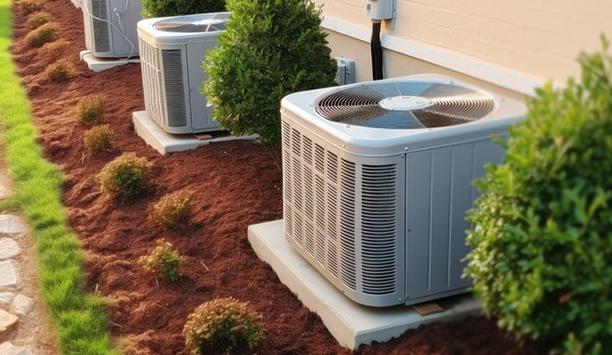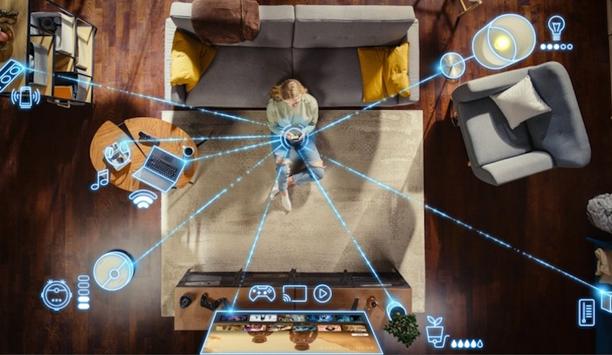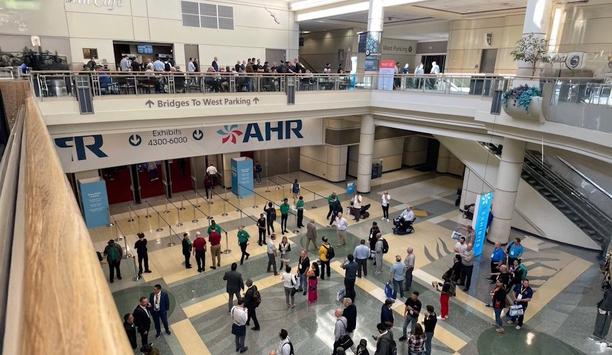HVAC systems typically operate on a schedule. Heating, cooling and ventilation systems start and stop at fixed times of the day, scheduled around when and how a building is used. But, shouldn’t the number of occupants in a building or a room have an impact on how the HVAC system operates?
Considering occupancy, when addressing HVAC needs, is an especially timely approach, given that building schedules are less predictable now, since the COVID-19 pandemic changed work patterns, possibly forever. ‘Hybrid’ work arrangements mean employees could be working or not, at various times of the day or night, no longer adhering to the traditional 9 am to 5 pm workday. Operation of HVAC systems should be just as flexible.
Nomad Go
Nomad Go uses ‘edge computer vision’ sensors to count the people in a room and provides that data to the Cloud
Occupancy represents a key variable, when determining HVAC requirements and a system called Nomad Go enables an HVAC system to operate based on occupancy. Nomad Go uses ‘edge computer vision’ sensors to count the people in a room and provides that data to the Cloud, where it is used to direct operation of a building’s (or a room’s) HVAC system in real time, based on occupancy.
“Combining computer vision with artificial intelligence provides a balance between saving energy and ensuring comfort,” said David Greschler, the Chief Executive Officer (CEO) and Co-Founder of Nomad Go.
Impact of HVAC systems on carbon emissions
He adds, “The system also emerges at a time of greater awareness about climate change and the impact of building HVAC systems on carbon emissions. The stars have aligned to make the solution we have developed very powerful.”
Occupancy data is captured using the low-cost computer vision sensors, manufactured by Sony. Each sensor captures video data at 30 frames per second and uses computer vision processing to determine occupancy. Inference analysis occurs inside the device (at the edge). All video is captured anonymously, no individual is identified and video does not leave the sensor.
Computer vision sensors
David Greschler adds, “Computer vision sensors provide absolute precision and are ten times more accurate than other means of sensing occupancy. Computer vision is the only solution that gives you the precision you need for HVAC. The sensors employ ‘hyper-local learning’, that is, intelligence at the edge continuously improves the device’s accuracy.”
In addition to occupancy information to drive the HVAC system, computer vision can also sense other factors, including mask or hard-hat compliance. This added functionality can be provided to Nomad Go customers.
Fine-tuning HVAC system operation
Fine-tuning HVAC system operation to conform to occupancy data also requires consideration of variables
Fine-tuning HVAC system operation to conform to occupancy data also requires consideration of variables, such as how much time it takes to adjust a room to a required comfort level and how hot or cold an empty room is allowed to reach.
“What we are really doing is widening the set points in unoccupied mode and narrowing the set points in occupied mode,” said David Greschler. At 1 am, for example, the system would allow room temperature in unoccupied mode to drift, but not so far as to require too long to return to the occupied comfort level. Factors impacting these variables include the outside weather, the time of year, the number of people involved, etc.
“We look at how fast it takes for the room to go from unoccupied to occupied set points,” said David Greschler, adding “If it takes less time, we can widen the set points. We are constantly monitoring based on real data. We are saving money in unoccupied mode, but we need to quickly return to a comfortable temperature, if someone enters the room. We also constantly poll the ‘time to comfort’, to adjust the unoccupied temperatures, to ensure a rapid return to comfort.”
Occupancy information processing in the Cloud
Processing of occupancy information occurs in the Cloud and the system depends on technologies, such as Power over Ethernet (PoE) and WiFi. The system can communicate with building automation systems (BAS) too, in effect injecting occupancy as a new variable in building systems. Alternatively, it can communicate directly with a smart thermostat, such as Nest.
The Microsoft Azure cloud platform provides resiliency to the system and Microsoft’s strong Internet of Things (IoT) management tools facilitate the exchange of IoT data with devices. The system also integrates easily with other systems. For example, it can work with Microsoft Outlook calendar software, so as to manage when rooms are likely to be occupied, based on what meetings are planned.
Nomad Go operations similar to Nest smart thermostat
Nomad Go substitutes occupancy data from computer vision for the smartphone location signal
David Greschler compares Nomad Go’s use of occupation data to how a Nest smart thermostat can adjust a home owner’s HVAC system, based on location data from a smartphone. When an occupant (and his or her smartphone) is away from home, the Nest system operates in ‘economy mode’ and then cranks up the system, when the occupant returns home.
For the commercial and multi-family environment, Nomad Go substitutes occupancy data from computer vision for the smartphone location signal. (Nomad Go is used in common areas of multi-family residential spaces.)
Environmental benefits contribute to ROI
“The system involves a monthly subscription fee, which is offset by a likely reduction in energy usage of 30%,” said David Greschler.
With the broader trend toward net-zero emissions and large carbon footprint of buildings, environmental benefits also contribute to return on investment (ROI).








































